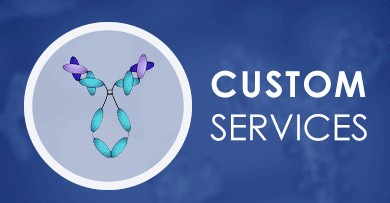 Loading...
Loading...

MICB
 Loading...
Loading...Anti-MICB Products
-
- Derivation: Mouse
- Species Reactivity: Human
- Type: Mouse IgG1, κ
- Application: WB, IP, IF, ELISA
- Anti-Human MICB Recombinant Antibody (TAB-526CL)
-
- Derivation: Humanized
- Species Reactivity: Human
- Type: Antibody
-
- Derivation: Humanized
- Species Reactivity: Human
- Type: ADCC enhanced antibody
-
- Species Reactivity: Human
- Application: FC, WB
- Recombinant Mouse Anti-MICB Antibody (CBL145) (NEUT-1740CQ)
-
- Species Reactivity: Human
- Type: IgG2
- Application: FC, WB, IHC, Neut
- Human Anti-MICB Antibody, mRNA (TAB-526CL-mRNA)
-
- Species Reactivity: Human
- Rabbit Anti-MICB Recombinant Antibody (VS-0723-WK236) (VS-0723-WK236)
-
- Species Reactivity: Human
- Type: Rabbit IgG
- Application: ELISA, FC
- Mouse Anti-MICB Recombinant Antibody (HPAB-N0178-YC) (HPAB-N0178-YC)
-
- Species Reactivity: Human
- Type: Mouse IgG2
- Application: ELISA, FC
- Mouse Anti-MICB Recombinant Antibody; scFv Fragment (HPAB-N0178-YC-S(P)) (HPAB-N0178-YC-S(P))
-
- Species Reactivity: Human
- Type: Mouse scFv
- Application: ELISA, FC
- Mouse Anti-MICB Recombinant Antibody; Fab Fragment (HPAB-N0178-YC-F(E)) (HPAB-N0178-YC-F(E))
-
- Species Reactivity: Human
- Type: Mouse Fab
- Application: ELISA, FC
- Mouse Anti-MICB Recombinant Antibody (clone 1B2F11) (VS7-0425-WR384)
-
- Species Reactivity: Human
- Type: Mouse IgG1
- Application: FC
-
- Species Reactivity: Human
- Target: MICB
- Host Animal: Mouse
- Application: ELISA, FC, Cell-uptake
-
- Species Reactivity: Human
- Type: IgG
- Application: WB
-
- Species Reactivity: Human
- Type: IgG
- Application: ELISA
Can't find the products you're looking for? Try to filter in the left sidebar.Filter By Tag
Our customer service representatives are available 24 hours a day, from Monday to Sunday. Contact Us
For Research Use Only. Not For Clinical Use.
Background
Disease related genes
Membrane
Cell type enhanced (Kupffer cells, monocytes, T-cells, Hofbauer cells, Erythroid cells, dendritic cells)
Low immune cell specificity
Cell line enhanced (U-266/70, U-266/84)
Unlike classical MHC class I molecules, does not form a heterodimer with beta-2-microglobulin. Binds as a monomer to a KLRK1/NKG2D homodimer. KLRK1 forms a complex with HCST/DAP10 in which KLRK1 binds MICB while HCST acts as an adapter molecule which enables signal transduction. Receptor-ligand interaction induces clustering of both proteins in ordered structures called immune synapses and also leads to their intercellular transfer. This is associated with a reduction in the cytotoxicity of KLRK1-expressing cells. (Microbial infection) Interacts with human cytomegalovirus/HHV-5 glycoprotein UL16; this interaction causes sequestration of MICB in the endoplasmic reticulum and increases resistance to KLRK1-mediated cytotoxicity.



